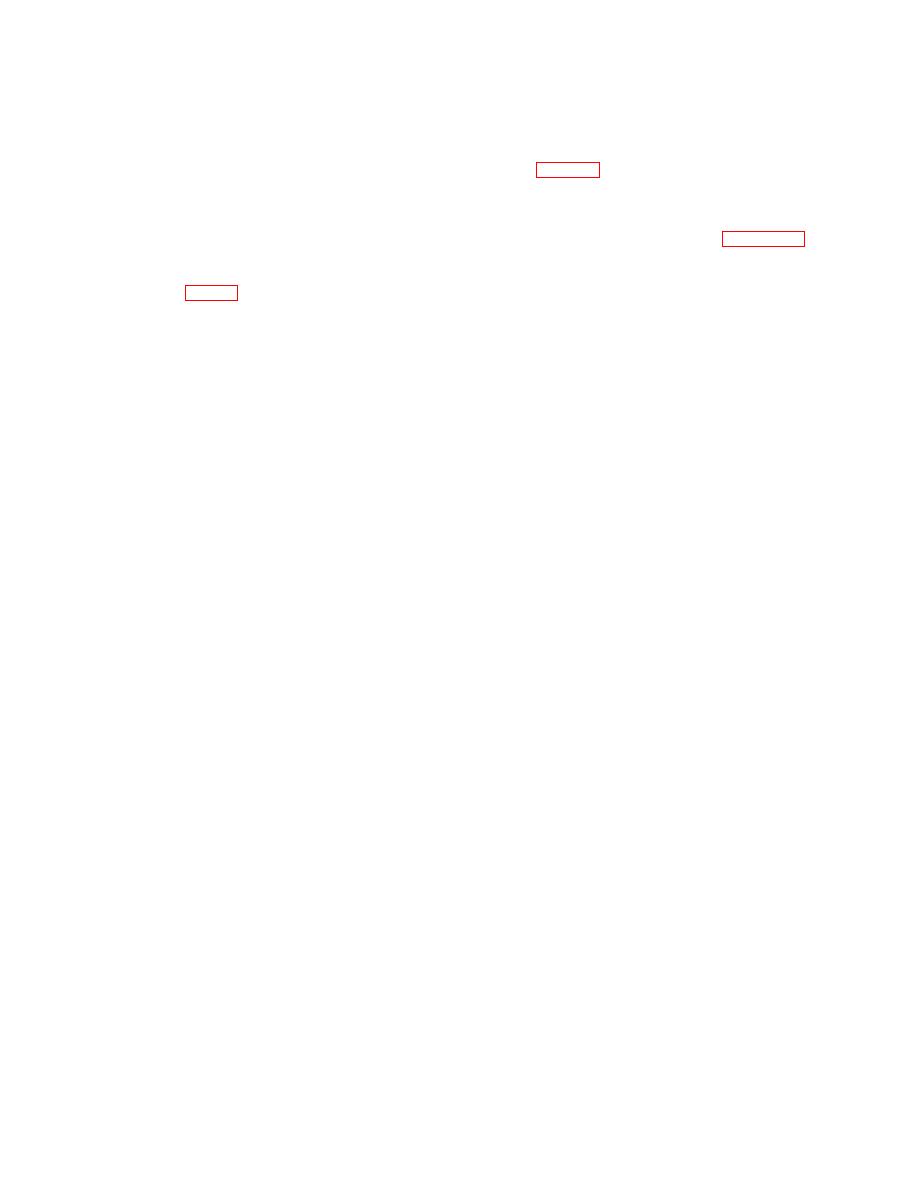
TM 55-4920-215-15
the unit is not replaced before the next
scheduled inspection.
The operator should be alert for any unusual noises,
vibrations. or irregularities of performance.
d. At Halt Service. This service will consist of brief
32. Specific Procedures for Operator
visual inspection of equipment for condition, security,
and wear; the removal of foreign material from
performed on the shop set by the operator in daily
equipment; and the cleaning of equipment that might be
service. An X in a column indicates that the procedure
damaged by allowing existing conditions to continue.
opposite it should be performed during that part of the
daily service it appears in. Refer to appendix I for listing
e. After Operation Service. This service consists
of technical publications containing daily operator
of investigating any deficiencies noted during operation
services for individual items of equipment.
and performing certain phases of the "before operation"
service as noted in table I. It is the basic daily service
33. Cleaning
for equipment and consists of correcting, so far as
Any special cleaning instructions required for
possible, any operating deficiencies; in this manner, the
specific mechanisms or parts are contained in the TM
equipment is prepared to operate upon short notice.
for the equipment (app. 1).
General cleaning
f. Inspection. The general inspection of each item
instructions are as follows:
is generally a check to see whether the item is in good
a. Use drycleaning solvent to clean or wash grease
condition, correctly assembled, secure, and not
or oil from all metal parts.
excessively worn.
b. A solution of one part grease-cleaning
g. Definition of Terms. Terms used to describe the
compound to four parts of drycleaning solvent may be
inspection requirements of this section are defined as
used for dissolving grease and oil from the shop and
follows:
equipment other than optical instruments.
After
(1) Good condition.
This is usually an
cleaning, use cold water on exterior surfaces of the
external inspection to determine whether
shop, to rinse off any solution which remains. Operating
the unit is damaged beyond serviceable
equipment and hand tools, exclusive of optical
limits.
The term "good condition" is
instruments, may be wiped with a light lubricating oil.
explained further by the following: Not
c. When authorized to install new parts, remove
bent or twisted, not chafed or burned, not
any preservative materials, such as rust preventive
broken or cracked, not bare or frayed, not
compound, protective grease, etc.; prepare parts as
dented or collapsed, not torn or cut, not
required (oil seals, etc.); and for those parts requiring
deteriorated.
lubrication, apply the lubricant prescribed in the
(2) Correctly assembled. This term refers to
lubrication order.
the inspection of a unit to see that it is in
d. Nameplates, caution plates, and instruction
the normal assembled position. It is
plates made of steel rust very rapidly. When they are
usually an external visual inspection.
found to be in a rusted condition, they should be
(3) Secure. This is usually an external visual
thoroughly cleaned and heavily coated with an
inspection or a check by hand or wrench
application of clear lacquer.
for looseness. Such an examination must
include any brackets, lock washers, lock
34. General Precautions In Cleaning
nuts, locking wires, or cotter pins used.
a. Drycleaning solvent is flammable and should
(4) Excessively worn. This inspection is to
not be used near an open flame.. Fire extinguishers
determine whether equipment is worn
should be provided when these
beyond serviceable limits or to a point
likely
to
result
in
failure
if
16

